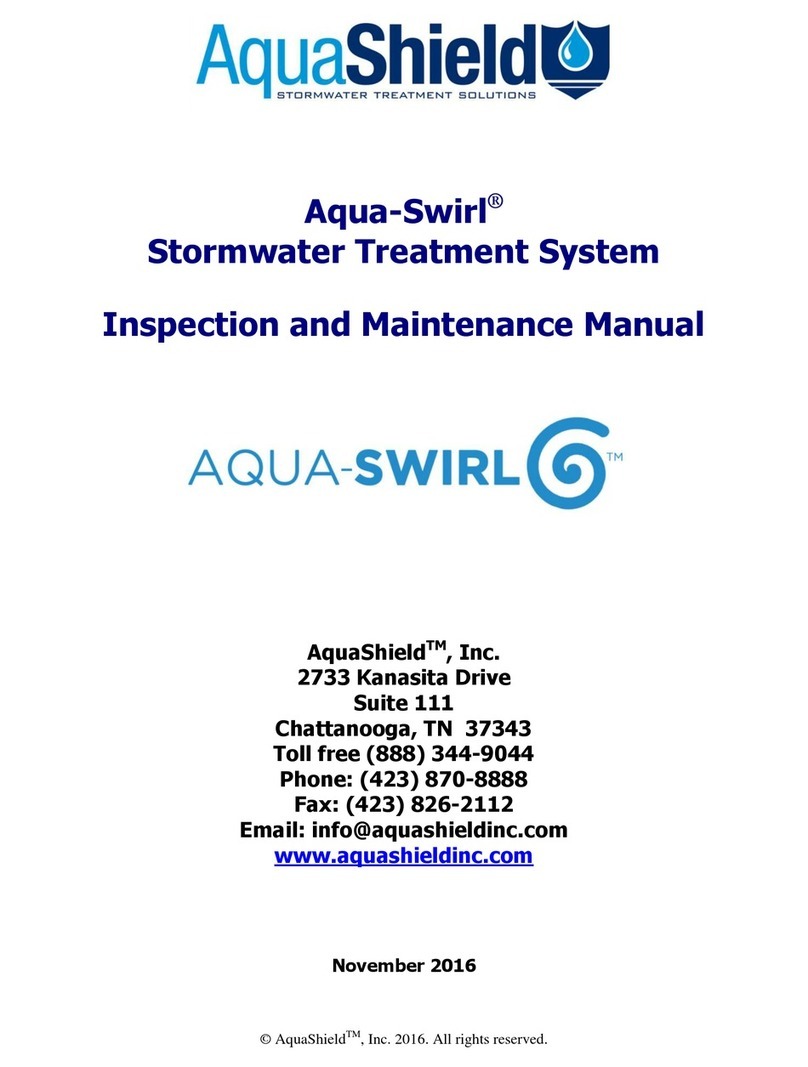
AquaShield
M Bio-Filter
M
Overview
The highest priority of AquaShieldTM, Inc. (AquaShield™) is to protect waterways
by providing stormwater treatment solutions to businesses across the world.
These solutions have a reliable foundation based on over 20 years of water
treatment experience. Local regulators, engineers, and contractors have praised
the AquaShieldTM systems for their simple design and ease of installation. All the
systems are fabricated from lightweight, durable materials, and contractors
prefer the quick and simple installation of our structures that saves them money.
The AquaShieldTM line of patented stormwater treatment products provide high
levels of stormwater treatment. AquaShieldTM manufactures the following
integrated product solutions:
Aqua-Swirl® Stormwater Treatment System
Aqua-FilterTM Stormwater Filtration System
Aqua-GuardianTM Catch Basin Insert
AquaShieldTM Bio-FilterTM Stormwater Biofiltration System
The
Bio-Filter
TM
Stormwater Biofiltration System
is capable of gross
contaminant removal, coarse- and fine-grained sediment removal, oil removal, as
well as the removal of heavy metals and phosphorus.
This Inspection and Maintenance Manual provides important information for
continued effective operation of the AquaShieldTM Bio-FilterTM system.
The Bio-FilterTM
Stormwater Biofiltration System is a modular “tree box” design
that provides an innovative and sustainable green infrastructure solution to meet
the growing challenges of Low Impact Development (LID) practices. The Bio-
FilterTM is a water quality treatment device capable of removing coarse and fine
sediment, trash and debris, heavy metals bound to particulate matter, and oil by
utilizing elements of pretreatment and biofiltration. Biofiltration is accomplished
by a proprietary engineered soil biomedia as well as uptake by the selected tree.
The Bio-FilterTM provides advanced pretreatment for rainwater collection
structures, or can be used as a standalone device for discharges to sensitive
receiving waters. Each system is custom engineered for site-specific needs using
proven lightweight and durable Polymer Coated Steel (PCS). The system
operates under gravitational and hydrodynamic forces with no moving parts
which simplifies the treatment process. The standard Bio-FilterTM system utilizes




























